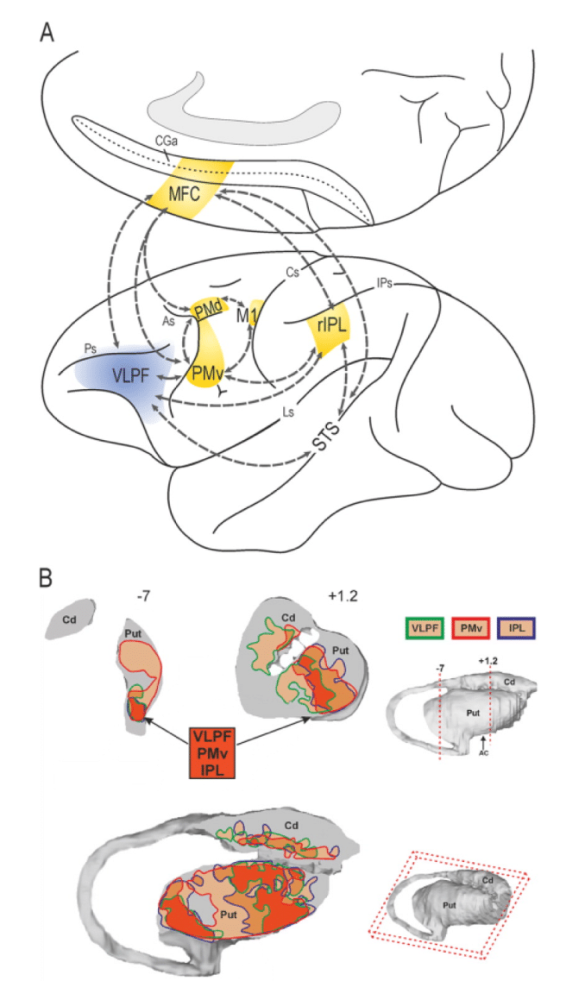GANGLIA
Motor and cognitive functions of the cortico-basal ganglia circuits in the monkey: from the laboratory to free social interactions
 |
This project received funding from the Italian MIUR (Ministero dell’Istruzione, dell’Università e della Ricerca), Funding program “FARE”, grant number R16PWSFBPL, 8th January 2018 – 7th January 2023, 239.840 € |
The studies carried out in the last thirty years have shown that cortical motor areas play a fundamental role not only in movement control, but also in a wide variety of perceptual, cognitive and even social functions. Nonetheless, the activity of these areas is strongly modulated by basal ganglia (BG), a nuclear complex located in the depth of the cerebral lobes with a tight anatomo-functional connectivity with areas of the cortical motor system. The relevance of the cortico-BG system in motor control is made dramatically evident by the outcome of pathological alteration of BG, such as Parkinson’s disease. On the contrary, though cognitive and emotional impairments have been described in patients with Parkinson’s disease, the possible contribution of BG in (typically cortical) perceptual and cognitive functions – such as the representation of space, objects and others’ actions – remains still virtually unknown.
This project aims at investigating these functions at the single neuron level, focusing on the putamen nucleus – the main entry site of premotor cortical information to the BG. The organization and methodology will be the same described in the ERC grant “WIRELESS”, with three main new objectives: (1) to map the properties of single neurons of the putamen during the execution of actions and the observation of objects and others’ actions; (2) to study the functional interactions between premotor cortex and putamen by means of simultaneous single-cell chronic recordings from the two regions; (3) to study causal dynamics underlying these interactions by means of chemical manipulation of neuronal activity in the putamen while simultaneously recording from the cortex. The crucial point of the project is the application of the “two-steps” methodology proposed in WIRELESS: single-neuron functional properties assessed by means of classical laboratory techniques will also be studied, in the same experimental session, during monkey’s free behaviour by means of telemetric techniques and by tracking the behaviour with a marker-less multi-camera system based on a virtual model of the animal.
This project will allow us to describe for the first time not only the role of BG and the cortex in perceptual and socio-cognitive functions, but also to directly verify the functioning of the cortico-BG system during natural behaviours (such as walking, climbing, social interactions, etc.), which cannot be studied in classical laboratory conditions. This will extend the research perspective of WIRELESS in new and previously unexplored directions, with several potential translational implications.
 |
The extended MN network (A) The cortical MN network includes a set of areas in which the presence of single neurons with mirror properties has been directly demonstrated (yellow) as well as other regions (the ventrolateral prefrontal areas 12 and 46) in which the presence of MNs is supported by anatomical evidence but not yet directly demonstrated (blue). The arrows represent the main anatomical connection between these areas. (B) Territories of the basal ganglia (BG) receiving projections from the areas belonging to the cortical MN network, namely, PMv (sector with red borders), IPL (blue borders), or VLPF (green borders). The light and dark orange shadings highlight the BG sectors in which two or even all of these three distinct sources of corticostriatal projections overlap. The coordinates (−7 and +1.2) indicated in the reconstruction on the top right part of the panel show the anteroposterior locations of the two BG slices shown on the left (from Bonini 2017, Neuroscientist). |
